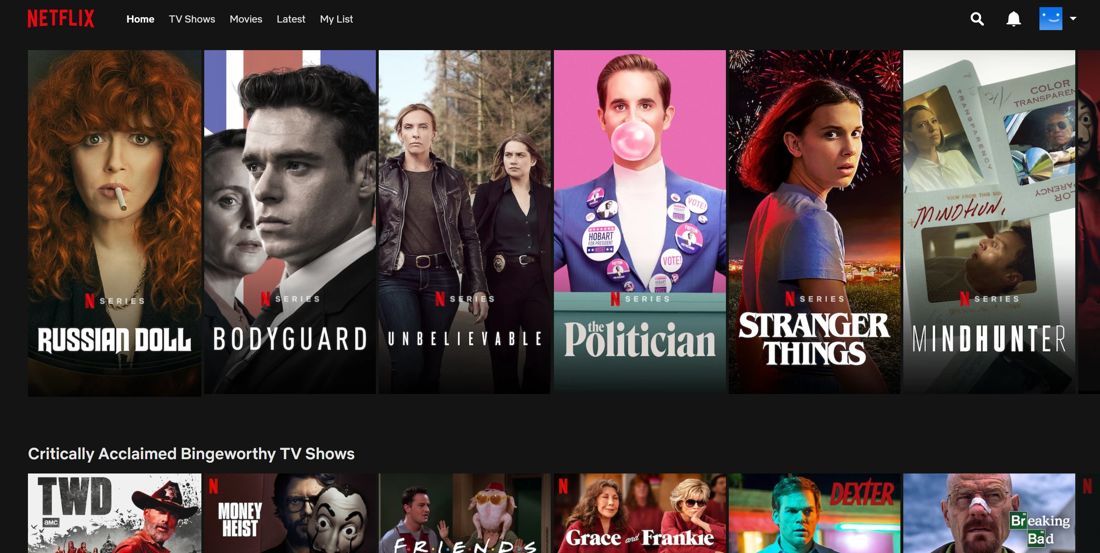People are frequently cutting their cords these days, leaving their cable and satellites behind for online streaming services. This change marked a new challenge for the marketing industry, as advertisers began looking for new ways to reach their audiences. Over-the-top (OTT) advertising and Connected TV (CTV) advertising have been able to fill that gap, but not everyone uses these outlets yet, so there is a large, fairy untapped market available that can help an advertiser reach their audience.
Since it can be unclear determining what these two terms mean and what functions they serve in advertising, this article explains their differences and similarities.
What is OTT?
OTT was named over-the-top because it goes over the tops of the traditional broadcast cable television world by streaming TV through the internet. OTT streaming services are usually through a laptop or phone, but they can be watched on other devices, like Apple TV, Amazon Fire TV, and more.
OTT Ads
Usually, when someone thinks of online streaming services, Netflix is one of the first things that comes to mind. However, there is not really a way to get ads on Netflix, which is part of what makes it so popular.

Hulu, on the other hand, does have ads, unless you choose to pay extra to do away with the ads. Hulu has about 54 million subscribers, and 33 million of them choose to leave ads in their content instead of paying extra (1).
There are other services, like Prime TV, YouTube, and Vudu that are also available for OTT ads.
Benefits of OTT Advertising
- You have better targeting features for your audience, since you can target certain demographics and data from the streaming companies. This makes OTT advertising more precise than advertising on cable, because your targeting is more exact.
- The ads are almost always unskippable, so people will typically sit through them, or at least mildly pay attention to them while they wait for their show to resume.
- OTT ads are made up of pixels, so they can be adapted to work on any screen size, so you do not have to worry about if something that looks great on your phone will look stretched and weird on your TV.
What is CTV?
CTV is a term for a TV that is hooked up to the internet in some way, usually through an ethernet cable or a TV that can connect wirelessly. CTVs include:
- Smart TVs that connect to the internet
- Game consoles like Xbox, Nintendo, and PlayStation.
- Devices like Chromecast, Fire TV, Roku, and Apple TV.
Computers, phones, and tablets are not considered CTV; this term is only applicable to a TV that is hooked up to the internet in some way.
The Benefits of CTV Advertising
With CTV ads, you can also get better targeting capabilities than standard TV, letting you get more out of your advertising budget. Since Millennials and Gen Z make up the largest group of cord cutters, this is the best way to reach them if they are your target audience. Considering how many of these two generations have cut their cords, it can be anticipated that future generations will continue to do so, making this style of advertising the future.
You can also measure the success of your campaigns a little better than you can with standard TV, which is also the case with OTT ads. Some of the metrics to measure your campaign’s success include the video completion rate, click rate, and impressions by device, day, network, and more.
The Major Difference
While the two terms are often used interchangeably, they are two distinctly different things. When you look at both CTV and OTT in the advertising tech industry, this is the right way to use each term.
When you are talking about devices like Smart TVs and streaming devices attached to TVs, you should use CTV. When you talk about OTT, the specific device you are streaming on does not matter; you are talking about any form of movie and TV streaming.
The two do go hand in hand; most of the time, you are streaming something from your OTT service on a CTV device. For example, if you watch Netflix on your Xbox, you are using CTV to use OTT. Sometimes, you will see some CTV devices, like Smart TVs, Chromecast, and
Amazon Fire, referred to as OTT boxes or OTT devices, but that is not an accurate claim. OTT is the streaming services themselves, not the devices you use to stream.
OTT and CTV Advertising Platforms
There are two major ways to buy your OTT and CTV ads: directly through the publisher or through a platform. If you buy your ads through the publisher, you have to buy advertising space through each individual publisher you want to advertise through. This can be expensive and time-consuming. If you use an OTT platform, you have access to all of the publishers that they work with, so you can get more from your advertising budget. With a platform, you also have access to better targeting features, so that you can pinpoint your advertising even more, and you have better reporting metrics so you can keep even better track of how each of your ad campaigns are doing.
Conclusion
To sum up the answer of OTT vs. CTV, OTT is the streaming service that you are watching online, and CTV is the internet-connected device you can stream through that is connected directly to your TV in some way. The two terms are linked, but not interchangeable.
If you are ready to get started on your OTT and CTV advertising campaigns, JamLoop is the premier platform to use. Contact JamLoop today to get started!
References
(1) Smith, Crag. “30 Hulu Statistics and Facts (2020) | By the Numbers.” DMR. 11 Jul. 2020. https://expandedramblings.com/index.php/hulu-statistics/
—-
About the Author: Auz Burger is a freelance writer who specializes in advertising and marketing technology. She has a BA from Washington State University and has been writing and editing professionally for 10 years. Connect with her on Twitter at @AuzBurger.
Disclosure: We might earn commission from qualifying purchases. The commission help keep the rest of my content free, so thank you!



